Abstract
BACKGROUND: Cervical cancer screening rates in the United States are sub-optimal. Physician factors likely contribute to these lower rates. Previous studies provide inconclusive evidence about the association between physician characteristics and the likelihood of addressing cervical cancer. This report assesses potential mechanisms that explain why certain providers do not address cervical cancer screening. METHODS: One hundred primary care residents from various specialties were asked to indicate the preventive topics they would address with a hypothetical white female in her early 20s, who was portrayed as living a "high risk" lifestyle, and visiting her provider only for acute care reasons. RESULTS: Among the provider characteristics assessed, only residents' ethnicity was associated with the likelihood of and time spent addressing cervical cancer screening. In particular, Asian-American residents were least likely to address cervical cancer, while African-American residents were most likely. A mediation analyses revealed that perceived barriers for addressing cervical cancer accounted for this difference. CONCLUSIONS: Study results suggest that there may be cultural factors among health care providers that may account for differential referral and treatment practices. Findings from this study may help identify factors that explain why cervical cancer screening rates are not higher.
Full text
PDF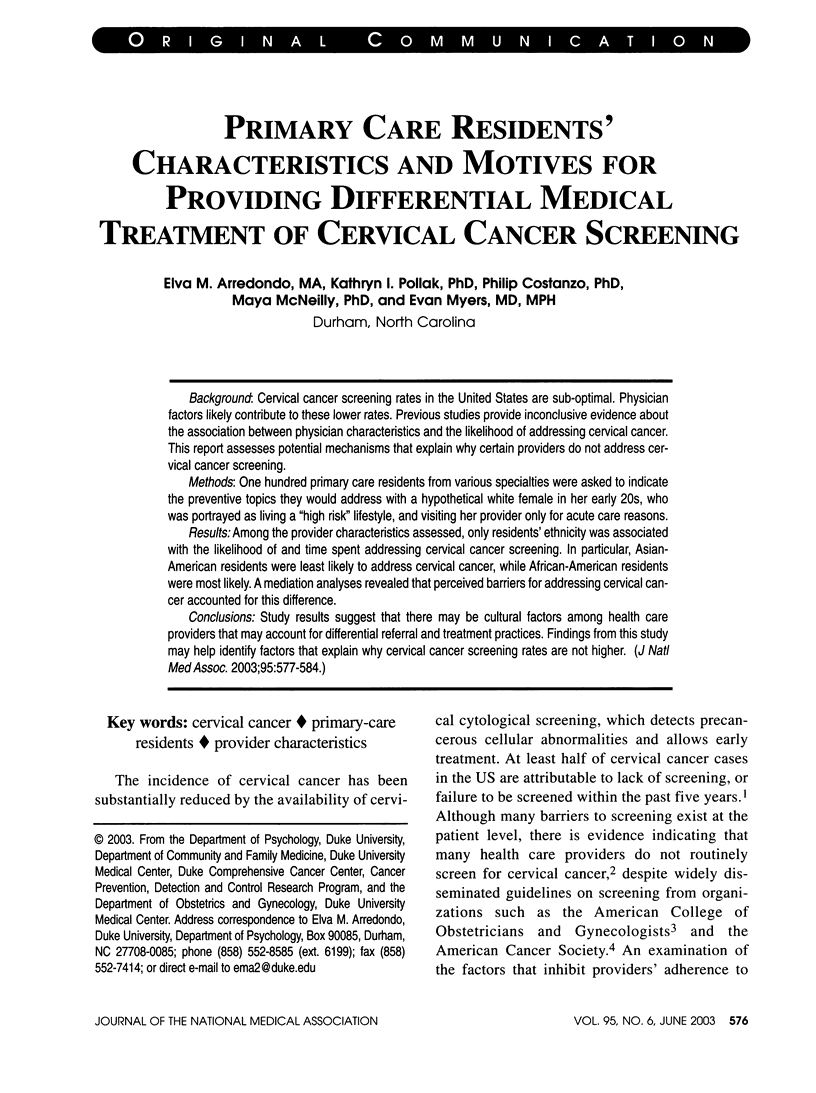
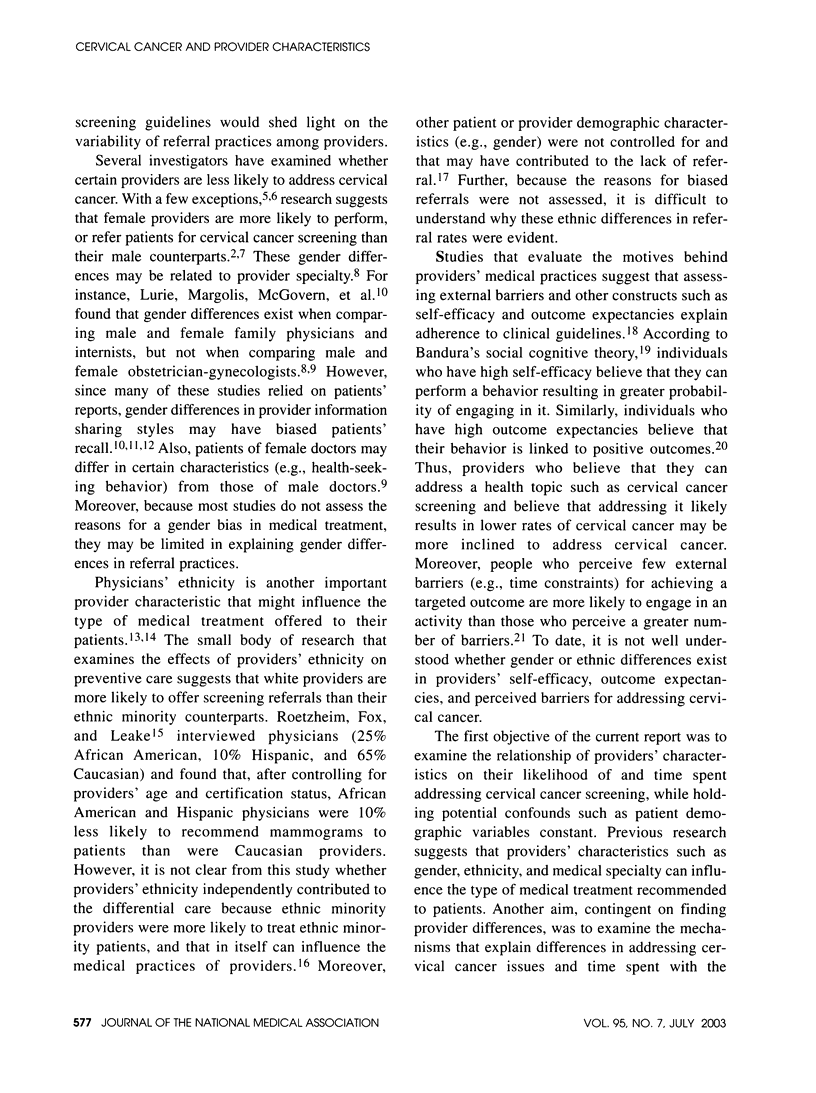
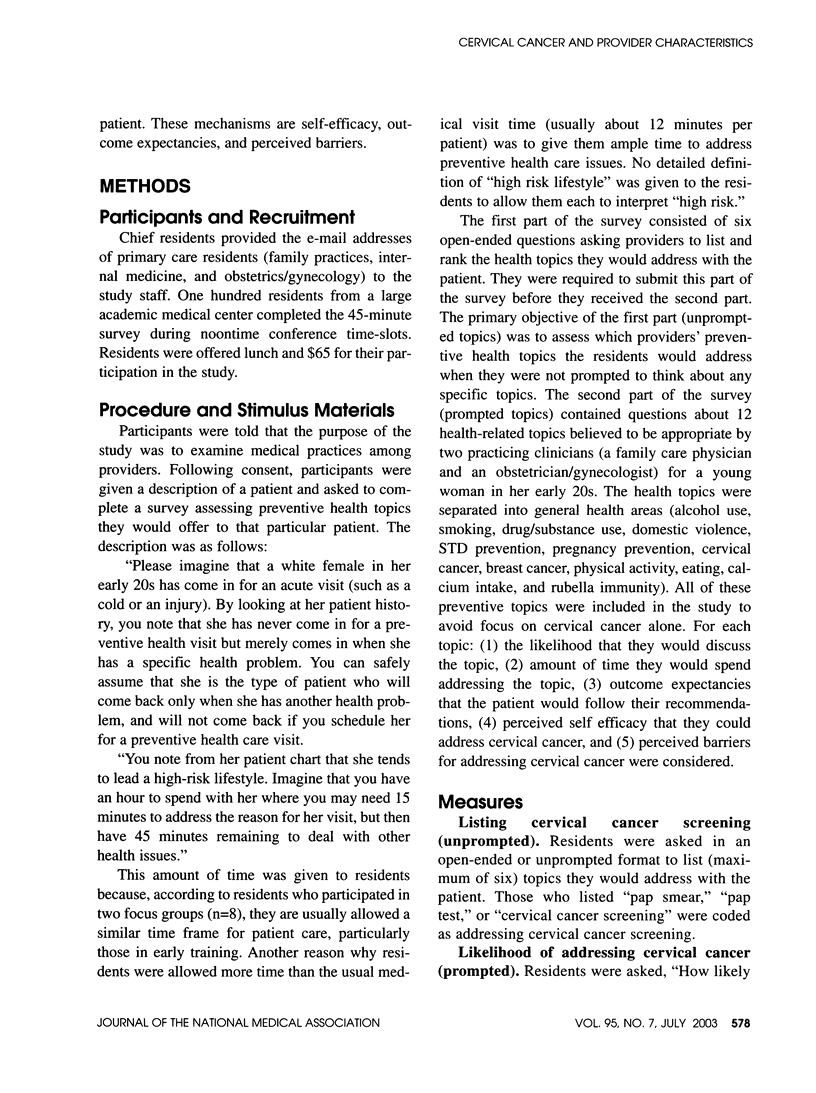
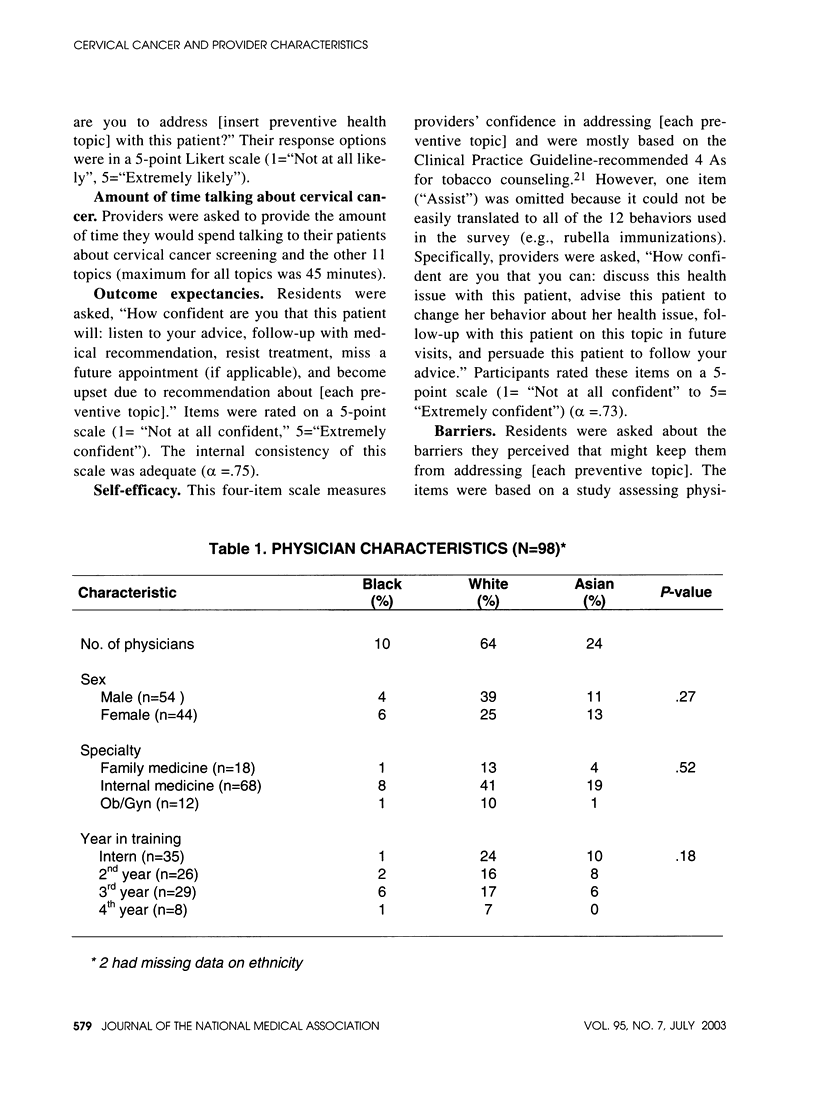
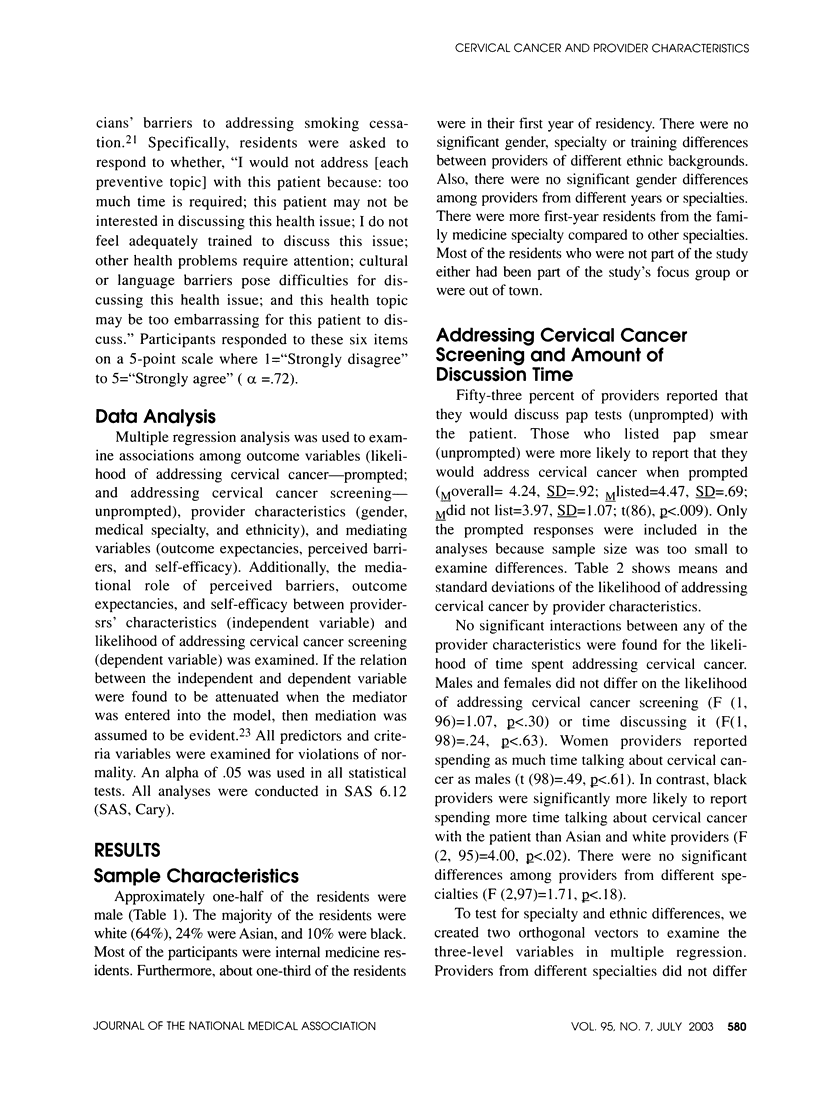
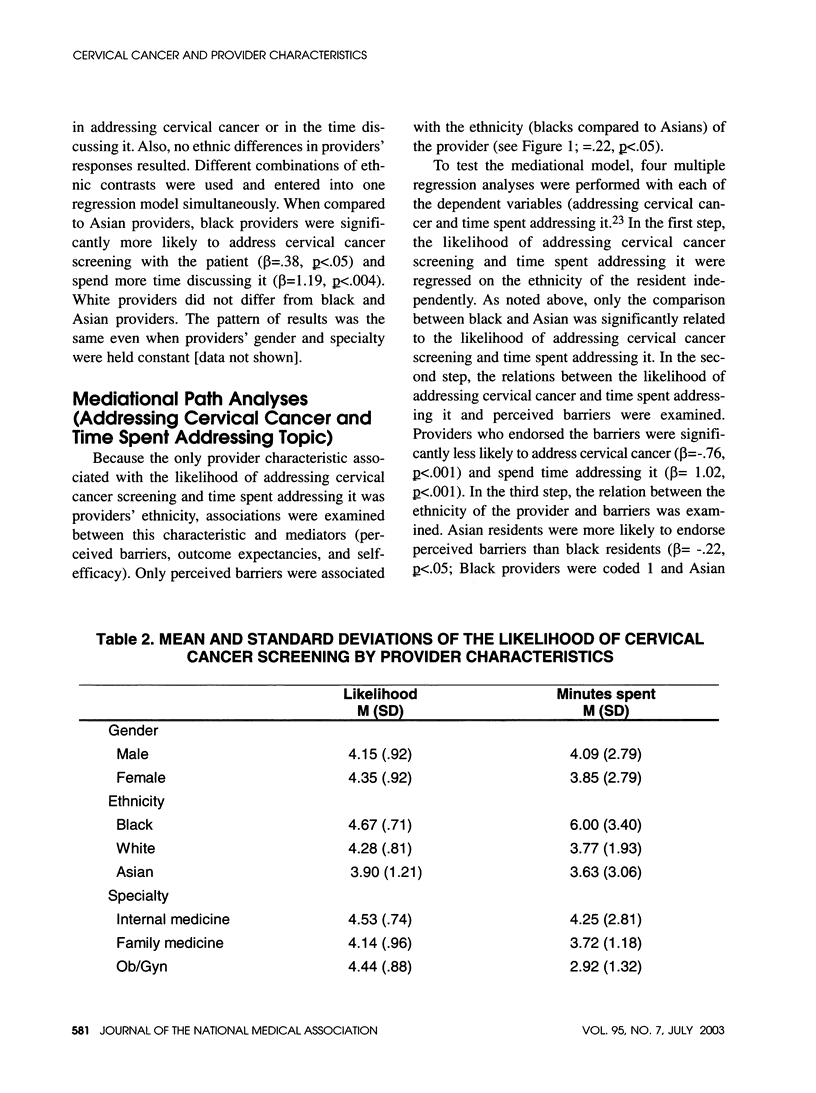
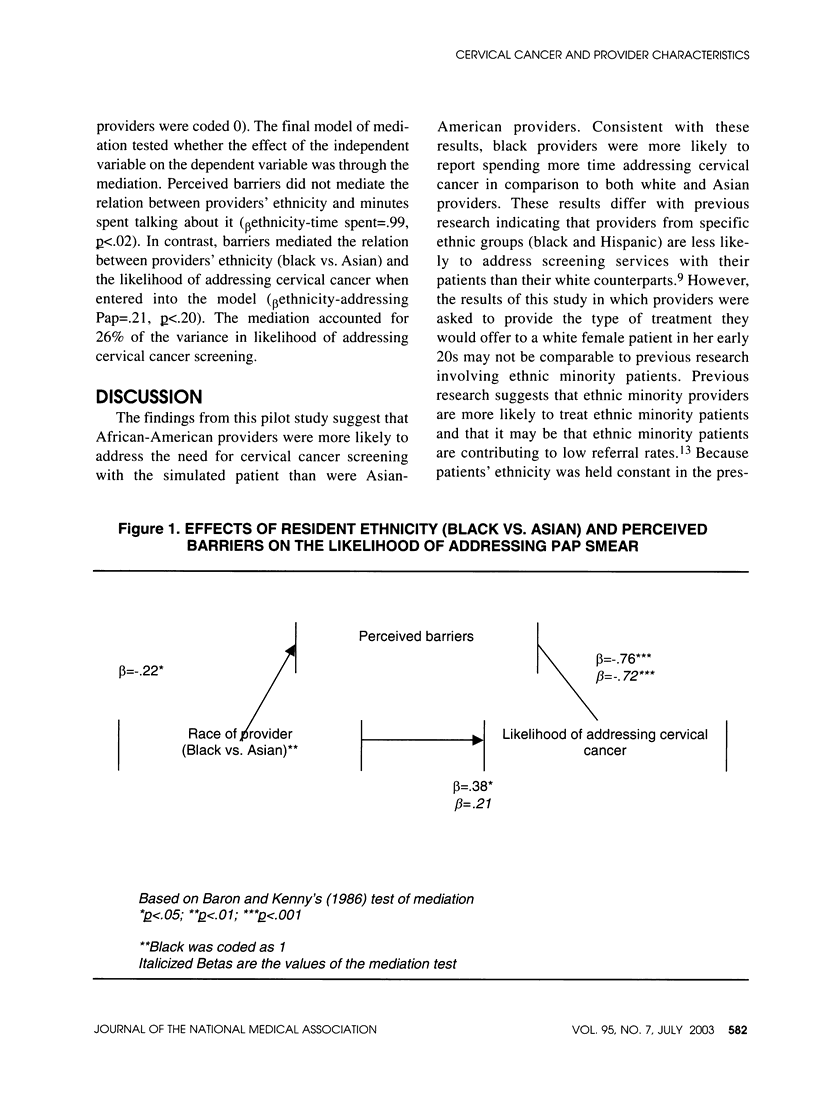
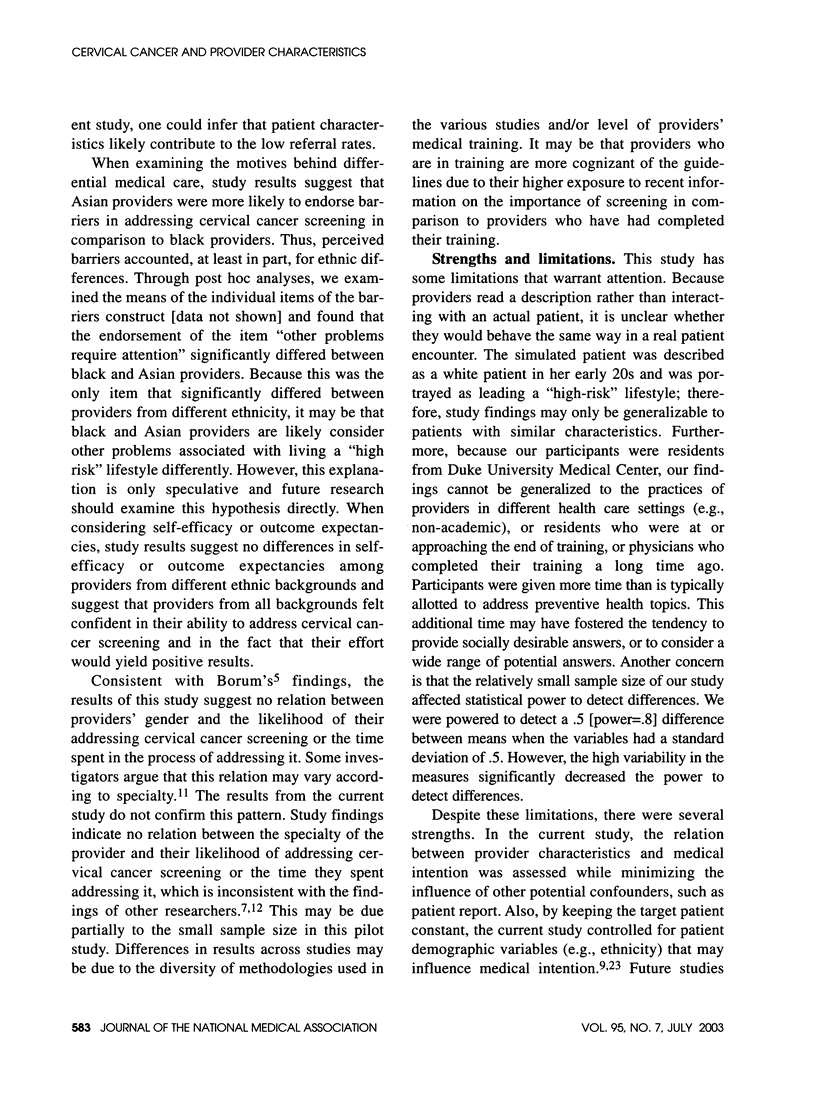
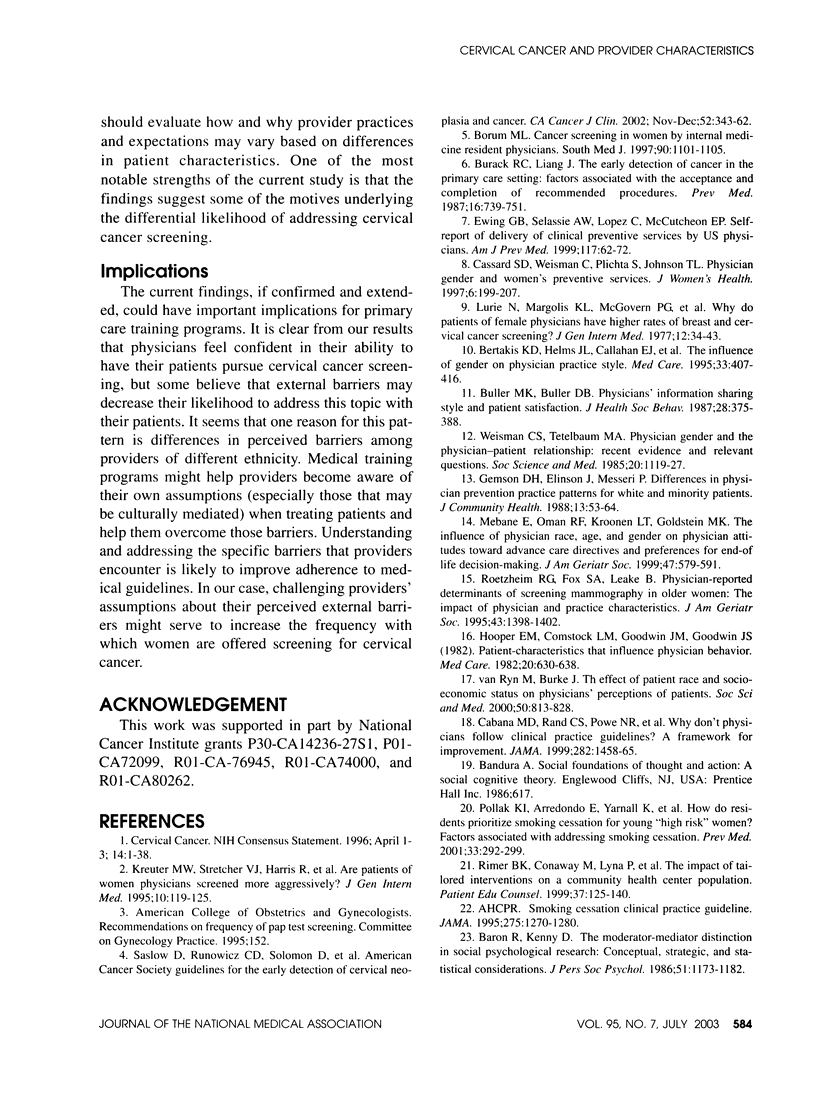
Selected References
These references are in PubMed. This may not be the complete list of references from this article.
- Baron R. M., Kenny D. A. The moderator-mediator variable distinction in social psychological research: conceptual, strategic, and statistical considerations. J Pers Soc Psychol. 1986 Dec;51(6):1173–1182. doi: 10.1037//0022-3514.51.6.1173. [DOI] [PubMed] [Google Scholar]
- Bertakis K. D., Helms L. J., Callahan E. J., Azari R., Robbins J. A. The influence of gender on physician practice style. Med Care. 1995 Apr;33(4):407–416. doi: 10.1097/00005650-199504000-00007. [DOI] [PubMed] [Google Scholar]
- Buller M. K., Buller D. B. Physicians' communication style and patient satisfaction. J Health Soc Behav. 1987 Dec;28(4):375–388. [PubMed] [Google Scholar]
- Burack R. C., Liang J. The early detection of cancer in the primary-care setting: factors associated with the acceptance and completion of recommended procedures. Prev Med. 1987 Nov;16(6):739–751. doi: 10.1016/0091-7435(87)90014-4. [DOI] [PubMed] [Google Scholar]
- Byrd R. P., Jr, Vasquez J., Roy T. M. Respiratory manifestations of tick-borne diseases in the Southeastern United States. South Med J. 1997 Jan;90(1):1–4. doi: 10.1097/00007611-199701000-00001. [DOI] [PubMed] [Google Scholar]
- Cabana M. D., Rand C. S., Powe N. R., Wu A. W., Wilson M. H., Abboud P. A., Rubin H. R. Why don't physicians follow clinical practice guidelines? A framework for improvement. JAMA. 1999 Oct 20;282(15):1458–1465. doi: 10.1001/jama.282.15.1458. [DOI] [PubMed] [Google Scholar]
- Cassard S. D., Weisman C. S., Plichta S. B., Johnson T. L. Physician gender and women's preventive services. J Womens Health. 1997 Apr;6(2):199–207. doi: 10.1089/jwh.1997.6.199. [DOI] [PubMed] [Google Scholar]
- Ewing G. B., Selassie A. W., Lopez C. H., McCutcheon E. P. Self-report of delivery of clinical preventive services by U.S. physicians. Comparing specialty, gender, age, setting of practice, and area of practice. Am J Prev Med. 1999 Jul;17(1):62–72. doi: 10.1016/s0749-3797(99)00032-x. [DOI] [PubMed] [Google Scholar]
- Gemson D. H., Elinson J., Messeri P. Differences in physician prevention practice patterns for white and minority patients. J Community Health. 1988 Spring;13(1):53–64. doi: 10.1007/BF01321480. [DOI] [PubMed] [Google Scholar]
- Hooper E. M., Comstock L. M., Goodwin J. M., Goodwin J. S. Patient characteristics that influence physician behavior. Med Care. 1982 Jun;20(6):630–638. doi: 10.1097/00005650-198206000-00009. [DOI] [PubMed] [Google Scholar]
- Kreuter M. W., Strecher V. J., Harris R., Kobrin S. C., Skinner C. S. Are patients of women physicians screened more aggressively? A prospective study of physician gender and screening. J Gen Intern Med. 1995 Mar;10(3):119–125. doi: 10.1007/BF02599664. [DOI] [PubMed] [Google Scholar]
- Lurie N., Margolis K. L., McGovern P. G., Mink P. J., Slater J. S. Why do patients of female physicians have higher rates of breast and cervical cancer screening? J Gen Intern Med. 1997 Jan;12(1):34–43. doi: 10.1046/j.1525-1497.1997.12102.x. [DOI] [PMC free article] [PubMed] [Google Scholar]
- Mebane E. W., Oman R. F., Kroonen L. T., Goldstein M. K. The influence of physician race, age, and gender on physician attitudes toward advance care directives and preferences for end-of-life decision-making. J Am Geriatr Soc. 1999 May;47(5):579–591. doi: 10.1111/j.1532-5415.1999.tb02573.x. [DOI] [PubMed] [Google Scholar]
- Pollak K. I., Arredondo E. M., Yarnall K. S., Lipkus I., Myers E., McNeilly M., Costanzo P. How do residents prioritize smoking cessation for young "high-risk" women? Factors associated with addressing smoking cessation. Prev Med. 2001 Oct;33(4):292–299. doi: 10.1006/pmed.2001.0884. [DOI] [PubMed] [Google Scholar]
- Rimer B. K., Conaway M., Lyna P., Glassman B., Yarnall K. S., Lipkus I., Barber L. T. The impact of tailored interventions on a community health center population. Patient Educ Couns. 1999 Jun;37(2):125–140. doi: 10.1016/s0738-3991(98)00122-0. [DOI] [PubMed] [Google Scholar]
- Roetzheim R. G., Fox S. A., Leake B. Physician-reported determinants of screening mammography in older women: the impact of physician and practice characteristics. J Am Geriatr Soc. 1995 Dec;43(12):1398–1402. doi: 10.1111/j.1532-5415.1995.tb06621.x. [DOI] [PubMed] [Google Scholar]
- Weisman C. S., Teitelbaum M. A. Physician gender and the physician-patient relationship: recent evidence and relevant questions. Soc Sci Med. 1985;20(11):1119–1127. doi: 10.1016/0277-9536(85)90189-3. [DOI] [PubMed] [Google Scholar]
- van Ryn M., Burke J. The effect of patient race and socio-economic status on physicians' perceptions of patients. Soc Sci Med. 2000 Mar;50(6):813–828. doi: 10.1016/s0277-9536(99)00338-x. [DOI] [PubMed] [Google Scholar]


